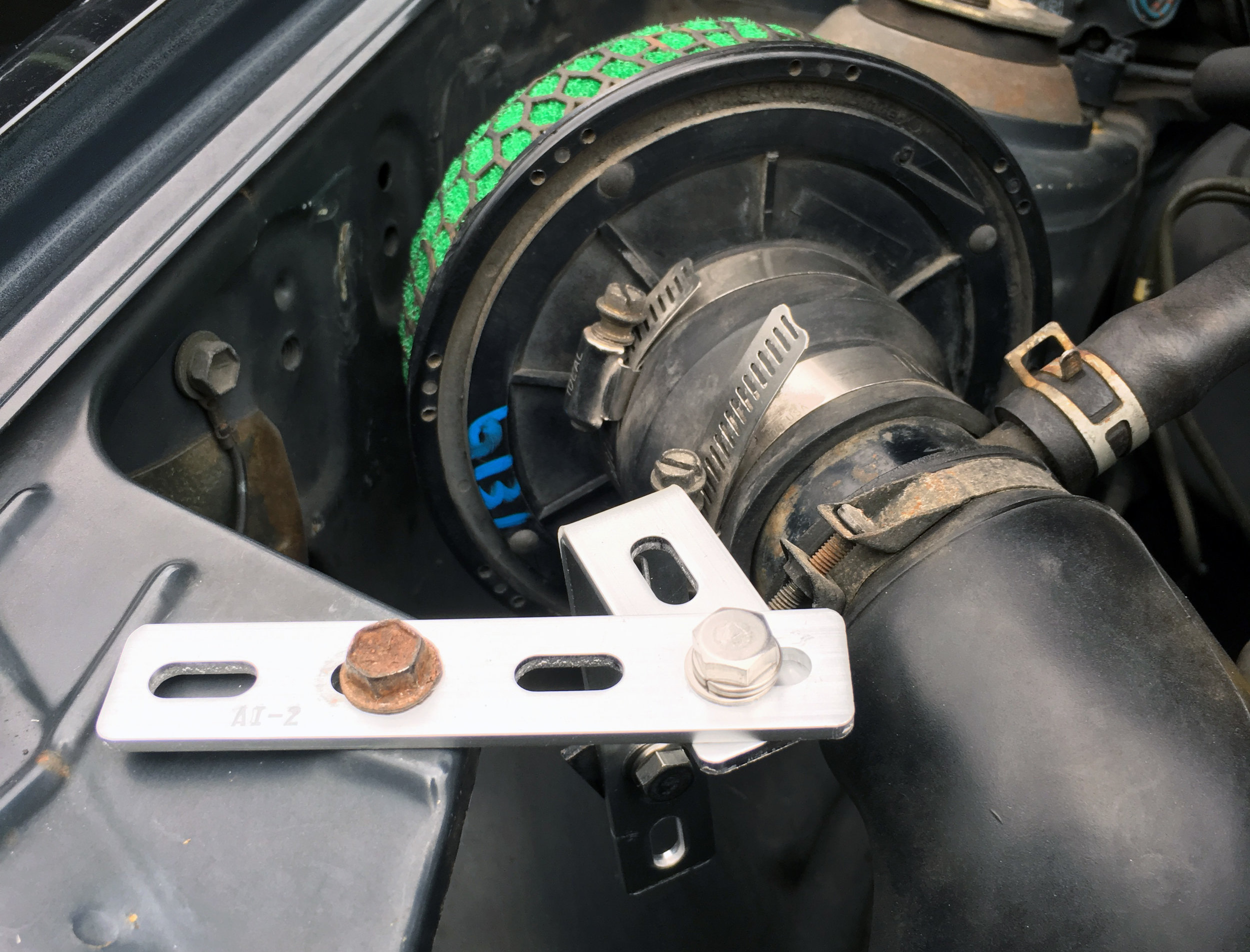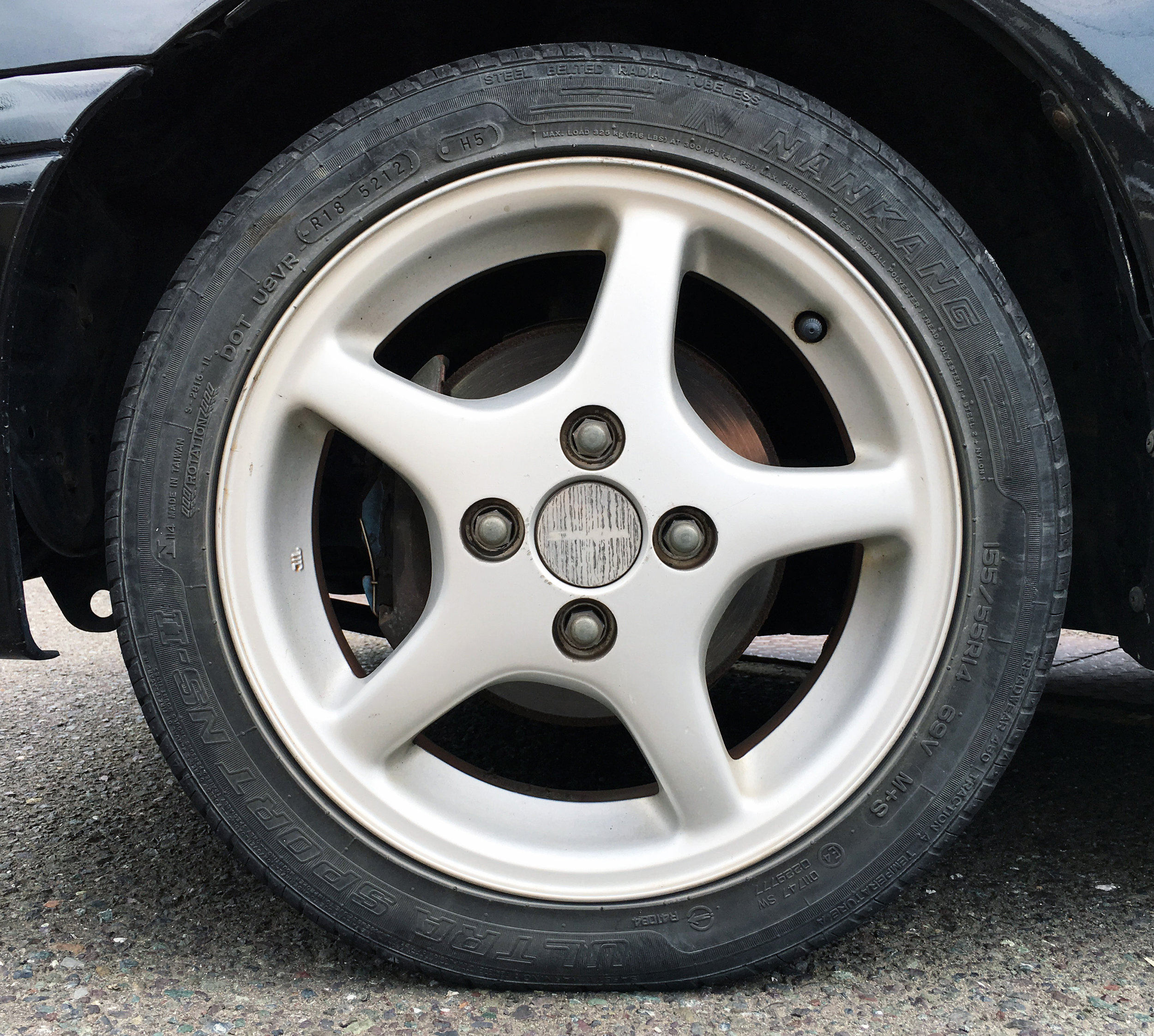[ Alto Works ] HKS Super Power Flow
Turbo cars can benefit greatly with a well-designed aftermarket air intake, as the stock intake can be, on some cars, a bit restrictive and can limit the additional amount of air necessary for high boost pressures. A higher flow filter, directed to draw air from cooler areas of the engine bay or directly from the front, can help improve power at higher RPMs.
However, there can be several drawbacks with aftermarket intakes, even the best designed ones. Noise is increased, unshielded filters can draw in hot air near the exhaust manifold, and exposed filters can draw in more debris or potentially water. Also importantly, engine tuning can be negatively affected, as the proper balance of air, fuel, and timing is absolutely critical.
Simply dropping in a cone filter does not necessarily improve performance. Many unknowing car owners pull out the stock intake piping, drop in a cone filter, and call it “good.” Stock intakes are designed a certain way for a reason; sometimes extra piping and large, empty Helmholtz chambers are needed and the location of air snorkels are well engineered. Moreover, the Mass Air Flow sensor is placed a certain distance away from the intake throttle body to properly measure air, but sadly, I’ve seen under enough hoods to realize not everyone knows this.
In California and some states in America, the replacement intake must also be certified CARB legal, so options are limited. In Japan, virtually any reasonable intake can be installed and still pass Japanese inspection. Knowing the potential drawbacks of installing an aftermarket intake, I figure the potential benefits still outweigh them and so all my cars have aftermarket intakes installed at the moment, all from highly reputable manufacturers.
Upon inspecting the original intake and filter, I found that it seems actually quite well designed as it is. The intake is piped in from just behind the right headlight, potentially drawing in plenty of fresh air, though sadly the intake piping is slightly small in diameter and has too many sharp bends, potentially decreasing airflow speed and pressure.
The filter design itself seems actually quite good, as the pleated filter offers plenty of surface area to draw air in. I contemplated keeping the original air box and simply altering the intake snorkel to improve airflow. Thankfully the previous owner of this Alto was gracious enough to include an uninstalled HKS Super Power Flow as part of the package, so I neither needed to buy an aftermarket part, nor modify my existing intake.
HKS filters have been criticized in some circles for being ineffectual or even poorly designed, as they say it can allow too much air particulates to enter the intake. Some famous Japanese tuners swear by them, though, and I’ve talked to a few owners who have put many miles (or should I say, kilometers) with the intakes and claim they work well.
Well, why not drop it in and see how it goes?
The mounts it came with were OEM and did not appear to be the mounts HKS originally included, according to their manual, so I had to use some aluminum brackets for a proper fit to avoid hitting the hood or other components in the engine bay.
While there is likely not a huge benefit for a stock-tuned engine, it might open up an ounce of HP if the engine can breathe more. The replacement HKS Super Power Flow intake sound is lovely, the sound of rushing air clearly audible in the cabin, even with windows up. These sounds, combined with the woosh of the recirculating valve, make the car sound lively around 3000 - 6000 RPM.
Along with this installation, I used a super thin .3mm aluminum sheet bent and shaped to block off extra radiant heat from the engine, hopefully encouraging cooler air to be drawn in from around the right headlight. (Although it looks like cardboard from some angles, the brown is actually just an adhesive backing sheet I opted not to remove at this time.)
This heat shield modification is only temporary until I redesign it with a thicker and larger aluminum sheet, which is already in progress. I would also like to use the dummy right inlet to the side of the headlight to potentially force more air directly into the air filter. Let’s see how that goes in the future...











































